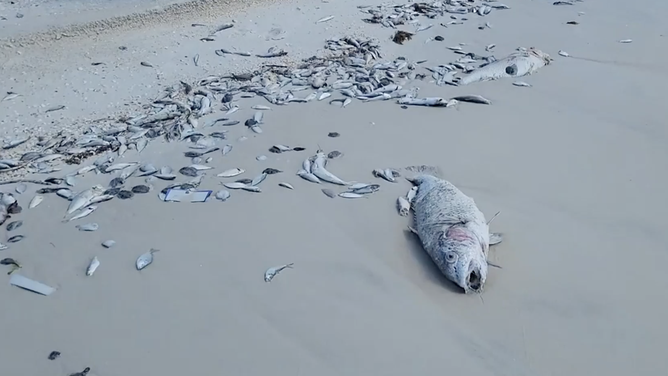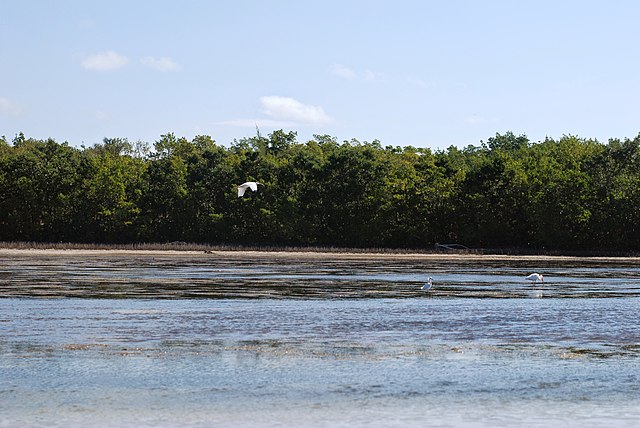Martha “Marti” Collins is Board Vice-Chair for Healthy Gulf and the founder of Collins Law Group. She has successfully litigated, lobbied, and negotiated for many of Florida’s largest precedent setting environmental and land use cases and polices. She has appeared before numerous governmental agencies in Florida and Washington, D.C.; including the Florida Governor, Cabinet and Legislature, and members of the United States Congress.
For the last several summers, Florida’s south west coast has been marred by thousands of dead fish, a stinking mess of decaying marine life, killed by red tide. From St. Petersburg to Marco Island, all of my favorite places to spend time with my family camping, swimming, fishing, and boating have been impacted. Some places so severely we haven’t visited in the last 5 years, for fear we would end up wasting vacation time and money amongst death and decay. Distressingly, Federal agencies and private companies are taking actions that could make future red tides even worse by developing offshore fish farms in Florida’s Gulf waters .

These industrial scale offshore fish farms discharge nitrogen and phosphorus that feed algae blooms like red tide. Scientists from the University of Florida’s Center for Coastal Solutions recently confirmed that nitrogen pollution from human activities can make red tide events last longer. Longer red tides can lead to more dead marine life, extended beach closures, and worse impacts on coastal economies.
Velella Epsilon is a fish farm pilot project proposed for 45 miles off the coast of Sarasota County. Many area organizations and the Sarasota City Commission have opposed it. Velella Epsilon just a small part of a larger push for offshore fish farms by the National Oceanic and Atmospheric Association (NOAA) and industrial aquaculture companies.
The Federal government is working to create Aquaculture Opportunity Areas (AOAs), which would formally identify thousands of acres of the Gulf of Mexico for industrial finfish farms. NOAA says that creation of these AOAs is designed to facilitate more efficient and sustainable permitting of fish farms, with the stated intent to help industrial aquaculture companies increase “investor confidence” and foster “responsible industry growth.”
Three of those AOAs would be located off Florida Gulf coast beaches, from Tampa south to Naples, each allowing for three to five separate fish farms that each would produce millions of pounds of fish annually. These are factory farms – or confined animal feeding operations – on the water.

Raising millions of pounds of fish requires millions of pounds of feed, which contains wild fish combined with a cocktail of fillers, such as corn and soy. Some of the feed will go uneaten, thereby adding nitrogen pollution to the water. The larger source of nitrogen pollution is fish waste, as millions of fish confined in net pens discharge millions of pounds of feces into the water, worsening future red tide events.
Comments at public hearings and written comments sent to NOAA on the AOAs overwhelmingly opposed fish farms in the Gulf. In fact, 90% opposed them. The public seems to be well aware of the problems that fish farms have caused in other areas, which, in addition to nitrogen pollution, include escaped fish harming wild fish, the use of antibiotics and anti-fouling chemicals, entanglement of whales and other marine life in nets, and more.
Congress is also in the mix, as pro-industrial fish farming bills have been introduced over the years. Those of us on the Florida Gulf Coast are tired of devastating red tides and must tell our Members of Congress that industrial fish farms will only harm the Gulf and our coastal communities.

Aquaculture can indeed contribute to a healthy and sustainable food supply. Oysters and clams are often farmed in bays along the Gulf Coast, where they feed on excess plankton, helping to purify the water. These types of operations don’t need any supplemental feed. And fish and shrimp can be farmed in ponds on land, where fish waste is retained and not discharged into waterways.
Our connection with the water defines life along the Florida Gulf Coast, and we need our water and beaches to be clean and healthy. Industrial fish farms and their nitrogen pollution are not worth the risk.
